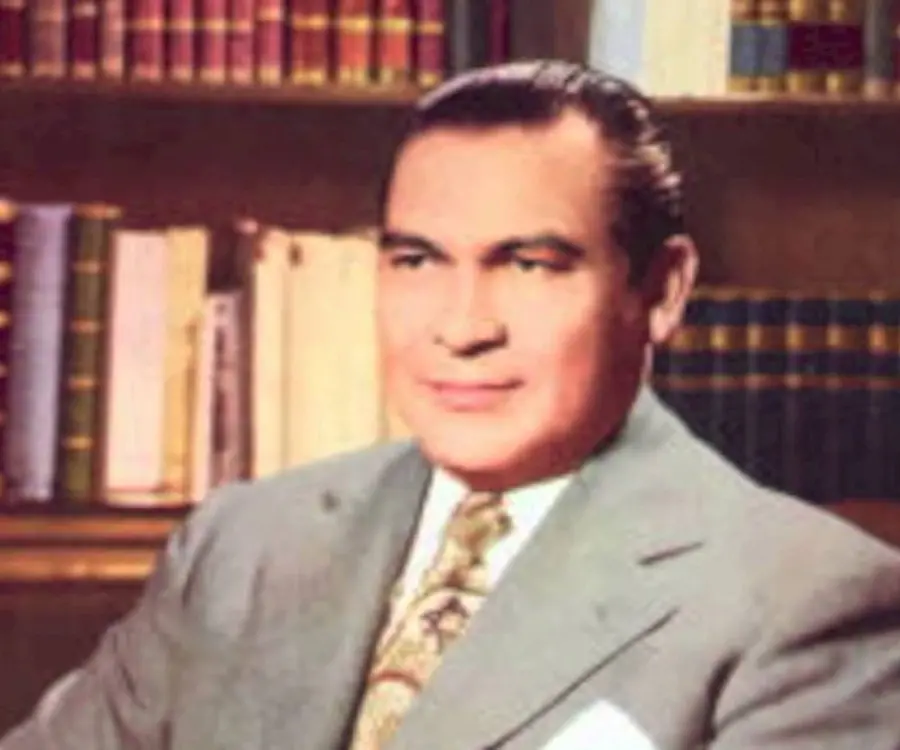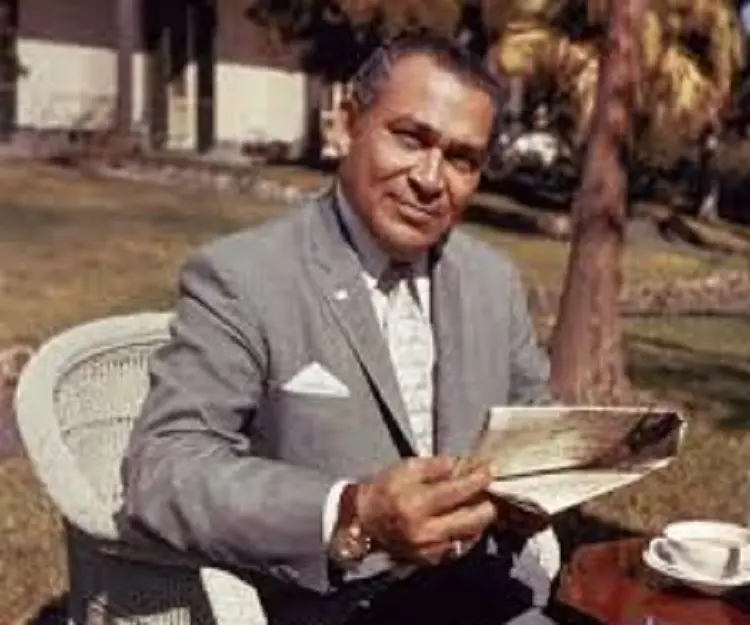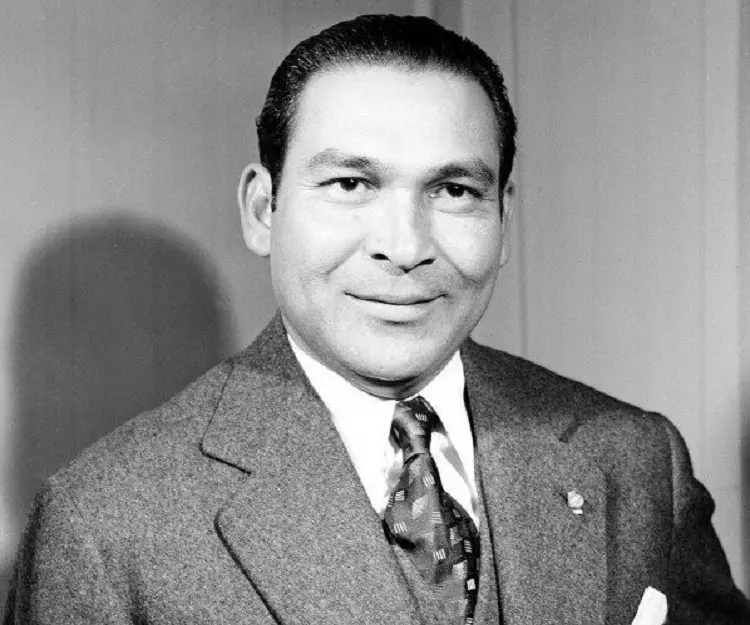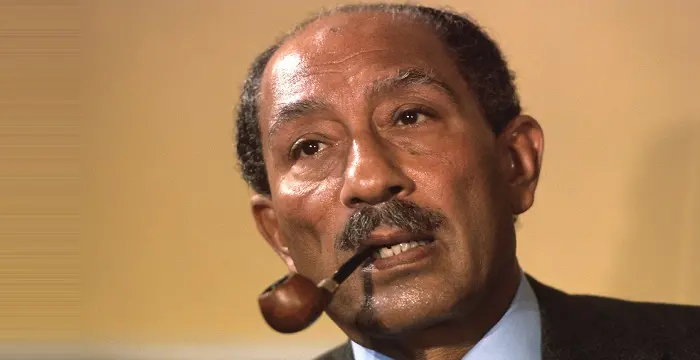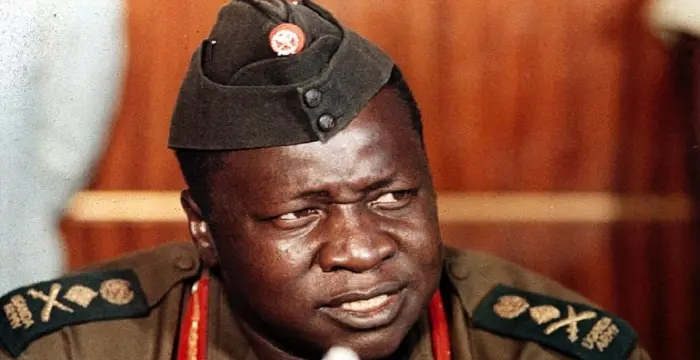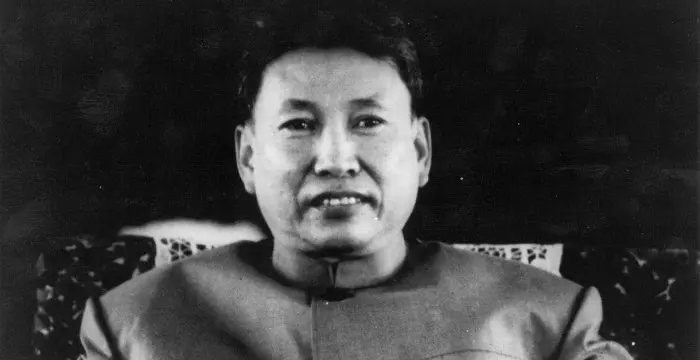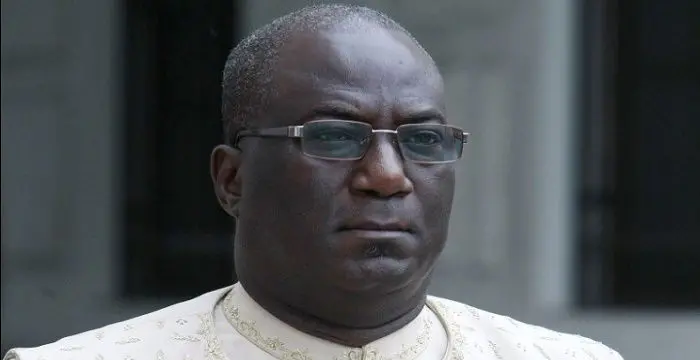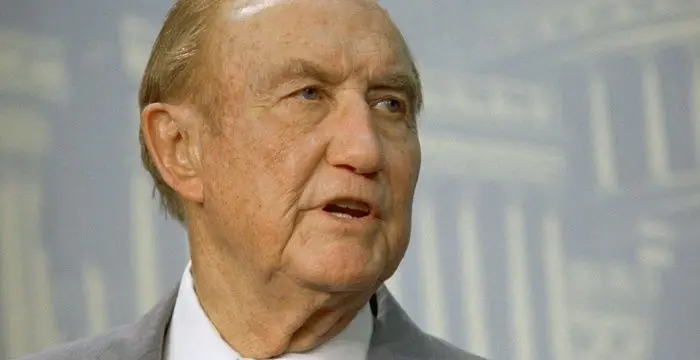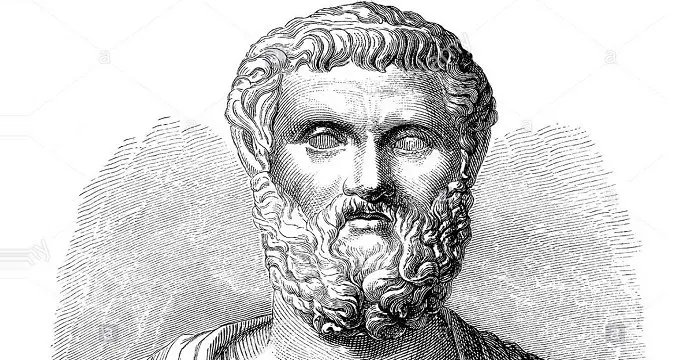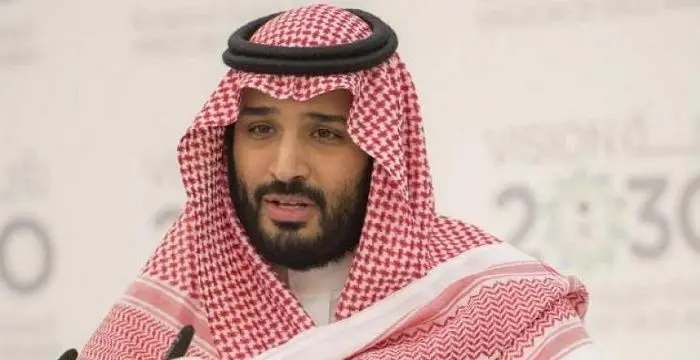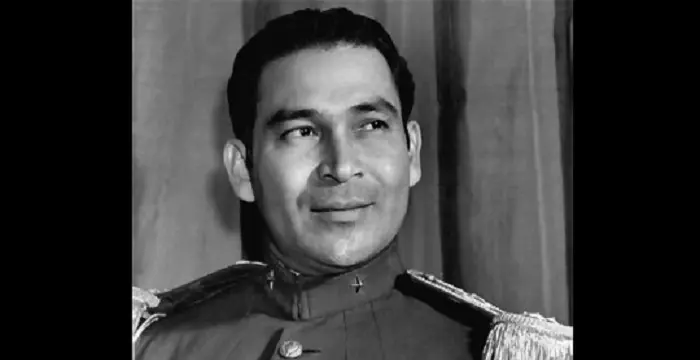
Fulgencio Batista - Former President of Cuba, Birthday and Personal Life
Fulgencio Batista's Personal Details
Fulgencio Batista was the dictator of Cuba
| Information | Detail |
|---|---|
| Birthday | January 16, 1901 |
| Died on | August 6, 1973 |
| Nationality | Cuban |
| Famous | Leaders, Political Leaders, Presidents, Dictators, Former President of Cuba |
| Spouses | Elisa Godinez Gomez de Batista, Marta Fernandez Miranda de Batista |
| Known as | Fulgencio Batista y Zaldivar |
| Childrens | Carlos Manuel Batista Fernández, Elisa Aleida Batista y Godinez, Fermina Lázara Batista Estévez, Fulgencio José Batista Fernández, Fulgencio Rubén Batista Godínez, Jorge Luis Batista Fernández, Marta María Batista Fernández, Mirta Caridad Batista y Godinez |
| Birth Place | Banes, Cuba |
| Religion | Catholicism |
| Gender | Male |
| Father | Belisario Batista Palermo |
| Mother | Carmela Zaldívar González |
| Sun Sign | Capricorn |
| Born in | Banes, Cuba |
| Famous as | Former President of Cuba |
| Died at Age | 72 |
Fulgencio Batista's photo
Who is Fulgencio Batista?
Fulgencio Batista y Zaldívar was the dictator of Cuba in the years leading up to the Cuban Revolution. Prior to becoming a dictator, he had served as the democratically chosen president of the country. Coming from a family of humble means, his early years were marked with hardships. After his mother’s death when he was 14, he left home and began to work as a labourer in the cane fields, docks, and rail roads. In April 1921, he enlisted in the army, serving as a corporal for two years. He joined the ‘Guardia Rural’ (rural police) in 1923, and later returned to the army, holding the position of the secretary of a regimental colonel. In 1933, he instigated the ‘Sergeants' Revolt’, which coordinated with several other factions in the elaborate coup that overthrew the Gerardo Machado government. With support from both the US government and the old ‘Communist Party of Cuba’, Batista was elected President in 1940. Despite major social reforms and populist policies implemented during his presidency, he failed to get his chosen successor elected in 1944, and left Cuba for the US. He orchestrated another coup in 1952 and seized power. For the next seven years, he would lead a corrupt and repressive regime until he was ousted by Fidel Castro’s ‘26th of July Movement’.
// Famous Presidents
Khalifa bin Zayed Al Nahyan
Sheikh Khalifa bin Zayed Al Nahyan is the current President of the United Arab Emirates (UAE). Check out this biography to know about his birthday, childhood, family life, achievements and fun facts about him.
Anwar Sadat
Anwar Sadat was the third President of Egypt and has been awarded the Nobel Prize for his peace initiatives. To know more about his childhood, career, profile and timeline read on the following biography.
Idi Amin
A Ugandan dictator, Idi Amin is remembered for his brutal regime and crime against humanity. Check this biography to know in details about his life, childhood, profile and timeline.
Childhood & Early Life
He was born as Ruben Zaldivar on January 16, 1901, in Veguita, a small rural community in Banes municipality in Holguín province, Cuba. He grew up alongside his three younger brothers, Hermelindo, Francisco, and Juan. He came from an impoverished background.
His father, Belisario Batista Palermo, was a freedom fighter under General José Maceo in the ‘Cuban War of Independence’, and his mother was Carmela Zaldívar González, who had her first child at the age of 15. He had Spanish, African, Chinese, and according to some scholars, native Caribbean ancestry.
He received his early education at a public school in Banes. Following that, he enrolled at an American Friends school. Besides earning his wages as a labourer, he worked as a tailor, mechanic, charcoal vendor, and fruit peddler.
Career & Later Life
During his two years of service in the Cuban army from 1921 to 1923, Fulgencio Batista learned typing and shorthand. After brief stints as a teacher, and with the rural police, he transferred back to the army and swiftly rose through the ranks to become a sergeant stenographer. In 1933, he was the secretary of a powerful, non-commissioned officers’ group which was at the forefront of a ‘sergeant’s conspiracy’.
Under his leadership, the 1933 coup was a success. With five leaders from different rebel factions, a coalition named ‘Pentarchy of 1933’ was formed to run the country. It drafted a proclamation written by Sergio Carbo. Batista was the only military representative who signed the document.
He was promoted to the rank of a colonel and became the Army Chief of Staff under the presidency of Ramón Grau San Martín, who had come to power replacing the Pentarchy.
In the ensuing years, he accumulated the support of the civil service and organized labour, on top of the absolute control he had over the military. He also developed a relationship with the US government, with the American State Department’s Sumner Welles acting as a mediator.
Batista forced Grau to resign on January 15, 1934, after just over hundred days of his presidency. For the next six years, Cuba was ruled by a series of puppet presidents, with Batista pulling the strings from the back.
Throughout all this, his popularity never wavered. In 1940, he contested in the general election with the support from the ‘Democratic Socialist Coalition’. He defeated Frau to become the first President under the new 1940 Constitution.
Historians generally hold his first term in positive regard. He ushered in major reforms, expanded the educational system, and fostered economic growth. Cuba took the side of the Allies in the Second World War. The Cuban declaration of war on Germany and Italy came on December 8, 1941, a day after the attack on Pearl Harbour.
The loss suffered by his protégé Carlos Saladrigas Zayas against Grau in the 1944 presidential election was a major setback for Batista. He actively sought to weaken the president-elect and his incoming administration. He moved to the US following Grau’s inauguration. However, he continued to be involved in Cuban politics, winning a seat in the Senate in absentia in 1948.
Upon returning to Cuba in 1952, Batista set up the ‘Progressive Action Party’ and decided to run for the office that year. In the polls before the election, his ‘United Action Coalition’ was trailing way behind the rest. Garnering the support of the army once more, he led a coup against the outgoing President Carlos Prío Socarrás and seized the control of the government as a provisional president. Subsequently, the election was cancelled.
Once in power, Batista revoked most of political liberties and prompted certain economic changes that would prove disastrous for Cuba. By the late 1950s, the US corporations owned 90% Cuban mines, 80% public utilities, 50% of its railways, 40% of its sugar production and 25% of its bank deposits.
He gave a free rein to organised crime, particularly to American mobsters such as Meyer Lansky and Lucky Luciano. Havana became "a hedonistic playground for the world's elite", “the Latin Las Vegas”, where drugs, gambling, and prostitution were rampant.
Before the ‘Cuban Revolution’, Batista’s most vocal critics were largely the advocates of liberal democracy. They considered his presidency as unconstitutional and illegal. To sate the growing unrest in the country, Batista held an election in 1954 with Grau as his major opponent. But Grau withdrew just a few days before the election, accusing the government of election fraud. Batista was elected without contest, bringing supposed legitimacy to his administration.
Batista crushed Fidel Castro’s initial attempts at armed rebellion at the Moncada Barracks in Santiago on July 26, 1953. Most of the rebels were killed, the rest, including Castro, were put into jail. He was finally released on May 15, 1955.
One of the biggest bastions of the anti-Batista sentiments was the ‘University of Havana’. In the last few months of 1955, the students were organising demonstration after demonstration, which often turned violent. Batista closed the university down on November 30, 1956.
There was even an attempt on his life on March 13, 1957, led by student leader José Antonio Echeverría. Batista’s response was brutal. Echeverria was killed in a police shootout. The rest of the students involved were either killed on the same day or were eventually hunted down.
In April 1956, he survived a military coup helmed by the popular military leader Ramón Barquín named ‘Conspiración de los Puros’ (Conspiracy of the Pure). It was foiled by Lieutenant Ríos Morejón, who defected to the government. In retaliation, Batista purged the military. Barquín was sentenced to solitary confinement and most of his trusted officers were executed.
The deaths of so many career officers ended up creating a vacuum in the chain of command in the military and would prove to be a catastrophic folly during the revolution. After being released, Castro made his way to Mexico in search of allies and funding, and met Che Guevara. They set up camps in the Sierra Maestra mountains, winning a series of battles against Batista’s troops by guerrilla warfare.
Batista was compelled by the Constitution to hold the election in 1958, and despite delay, it took place in November. Grau once more withdrew, this time within a few hours of the election day. Batista’s chosen candidate, Andrés Rivero Agüero, was elected President in an election which had 30-50% turnout.
Around this time, Batista also lost the US support. On January 1, 1959, he, along with 40 supporters and immediate family, fled to the Dominican Republic. Fidel Castro and his army entered Havana on January 8, 1959.
According to various allegations, he took as much as $700 million in art collection and cash in his flight from Cuba. The US government refused to let him enter the country. He relocated to Portugal and eventually to Spain where he was granted asylum.
Crimes against Humanity
By establishing a business relationship with the organised crime sector, Fulgencio Batista made millions. The early years of his dictatorship appeared prosperous on surface, with new casinos coming up every other day and the streets being full of Cadillacs. The reality was more severe—15% to 20% of the Cuban workforce was chronically unemployed; an average family earned only $6 a week.
As the years went by, the situation only worsened and the new graduates entering the workforce could not get employment. There were slums all over Havana right near towering high-rises.
In the mid-1950s, Batista suspended constitutional rights once more and applied stringent censorship on the media. His ruthless reprisal for the failed assassination attempt not only completely eradicated the student bodies responsible, ‘Federation of University Students’ (FEU) and the ‘Directorio’ (DR), but also targeted the political opponents who had nothing to do with it.
Castro was originally hiding in the Sierra Maestra Mountains with only 300 supporters. The number grew exponentially due to Batista’s police torturing innocent people. Youths, rebels or not, were publicly executed to serve as a cautionary warning for others not to join the insurgency. In a grotesque emulation of the Spanish colonial practice of public execution, hundreds of defiled corpses were hanged from lamp posts or discarded on open streets.
Major Works
In a legacy tarnished by greed and hunger for power, Fulgencio Batista’s most humanitarian and democratic achievement was the ‘1940 Constitution of Cuba’. Inspired by collectivist ideas that propagated the 1933 revolution, it was one of the most progressive constitutions of the time and provided for workers’ rights, free elections, universal suffrage, and civil liberties. Ironically, one of the first things he did on regaining power in 1952 was to suspend the Constitution.
Personal Life & Legacy
Fulgencio Batista was married twice. Elisa Godínez y Gómez, his first wife (married July 10, 1926), bore him three children, Mirta Caridad, Elisa Aleida, and Fulgencio Rubén. They divorced in October 1945 after almost 20 years of marriage.
He started a relationship with Marta Fernández Miranda before his divorce from Elisa was formalised. They married on November 28, 1945. They had five children together, four sons, Jorge Luis, Roberto Francisco, Carlos Manuel, and Fulgencio José, and a daughter, Marta María.
He spent the later years of his life in exile in Spain. He suffered a heart attack and passed away on August 6, 1973. He was 72.
Trivia
In the 1974 American crime film ‘The Godfather Part II, directed by Francis Ford Coppola, Batista was portrayed by actor Tito Alba.
His personal speechwriter Edmund Chester wrote the biography ‘A Sergeant Named Batista’, published in 1954.
// Famous Dictators
Idi Amin
A Ugandan dictator, Idi Amin is remembered for his brutal regime and crime against humanity. Check this biography to know in details about his life, childhood, profile and timeline.
Pol Pot
Pol Pot was the Cambodian revolutionary who led the Khmer Rouge. This biography provides a glimpse of his childhood, career, profile and timeline.
Siaka Stevens
Siaka Stevens was the third Prime Minister of Sierra Leone who later became the first President of the country. This biography of Siaka Stevens provides detailed information about his childhood, life, achievements, works & timeline.
Fulgencio Batista biography timelines
- // 16th Jan 1901He was born as Ruben Zaldivar on January 16, 1901, in Veguita, a small rural community in Banes municipality in Holguín province, Cuba. He grew up alongside his three younger brothers, Hermelindo, Francisco, and Juan. He came from an impoverished background.
- // 1921During his two years of service in the Cuban army from 1921 to 1923, Fulgencio Batista learned typing and shorthand. After brief stints as a teacher, and with the rural police, he transferred back to the army and swiftly rose through the ranks to become a sergeant stenographer. In 1933, he was the secretary of a powerful, non-commissioned officers’ group which was at the forefront of a ‘sergeant’s conspiracy’.
- // 1926Fulgencio Batista was married twice. Elisa Godínez y Gómez, his first wife (married July 10, 1926), bore him three children, Mirta Caridad, Elisa Aleida, and Fulgencio Rubén. They divorced in October 1945 after almost 20 years of marriage.
- // 1933Under his leadership, the 1933 coup was a success. With five leaders from different rebel factions, a coalition named ‘Pentarchy of 1933’ was formed to run the country. It drafted a proclamation written by Sergio Carbo. Batista was the only military representative who signed the document.
- // 1933In a legacy tarnished by greed and hunger for power, Fulgencio Batista’s most humanitarian and democratic achievement was the ‘1940 Constitution of Cuba’. Inspired by collectivist ideas that propagated the 1933 revolution, it was one of the most progressive constitutions of the time and provided for workers’ rights, free elections, universal suffrage, and civil liberties. Ironically, one of the first things he did on regaining power in 1952 was to suspend the Constitution.
- // 1934Batista forced Grau to resign on January 15, 1934, after just over hundred days of his presidency. For the next six years, Cuba was ruled by a series of puppet presidents, with Batista pulling the strings from the back.
- // 1940Throughout all this, his popularity never wavered. In 1940, he contested in the general election with the support from the ‘Democratic Socialist Coalition’. He defeated Frau to become the first President under the new 1940 Constitution.
- // 1941Historians generally hold his first term in positive regard. He ushered in major reforms, expanded the educational system, and fostered economic growth. Cuba took the side of the Allies in the Second World War. The Cuban declaration of war on Germany and Italy came on December 8, 1941, a day after the attack on Pearl Harbour.
- // 1944The loss suffered by his protégé Carlos Saladrigas Zayas against Grau in the 1944 presidential election was a major setback for Batista. He actively sought to weaken the president-elect and his incoming administration. He moved to the US following Grau’s inauguration. However, he continued to be involved in Cuban politics, winning a seat in the Senate in absentia in 1948.
- // 1945He started a relationship with Marta Fernández Miranda before his divorce from Elisa was formalised. They married on November 28, 1945. They had five children together, four sons, Jorge Luis, Roberto Francisco, Carlos Manuel, and Fulgencio José, and a daughter, Marta María.
- // 1952Upon returning to Cuba in 1952, Batista set up the ‘Progressive Action Party’ and decided to run for the office that year. In the polls before the election, his ‘United Action Coalition’ was trailing way behind the rest. Garnering the support of the army once more, he led a coup against the outgoing President Carlos Prío Socarrás and seized the control of the government as a provisional president. Subsequently, the election was cancelled.
- // 1953Batista crushed Fidel Castro’s initial attempts at armed rebellion at the Moncada Barracks in Santiago on July 26, 1953. Most of the rebels were killed, the rest, including Castro, were put into jail. He was finally released on May 15, 1955.
- // 1954Before the ‘Cuban Revolution’, Batista’s most vocal critics were largely the advocates of liberal democracy. They considered his presidency as unconstitutional and illegal. To sate the growing unrest in the country, Batista held an election in 1954 with Grau as his major opponent. But Grau withdrew just a few days before the election, accusing the government of election fraud. Batista was elected without contest, bringing supposed legitimacy to his administration.
- // 1954His personal speechwriter Edmund Chester wrote the biography ‘A Sergeant Named Batista’, published in 1954.
- // 1955One of the biggest bastions of the anti-Batista sentiments was the ‘University of Havana’. In the last few months of 1955, the students were organising demonstration after demonstration, which often turned violent. Batista closed the university down on November 30, 1956.
- // 1956In April 1956, he survived a military coup helmed by the popular military leader Ramón Barquín named ‘Conspiración de los Puros’ (Conspiracy of the Pure). It was foiled by Lieutenant Ríos Morejón, who defected to the government. In retaliation, Batista purged the military. Barquín was sentenced to solitary confinement and most of his trusted officers were executed.
- // 1957There was even an attempt on his life on March 13, 1957, led by student leader José Antonio Echeverría. Batista’s response was brutal. Echeverria was killed in a police shootout. The rest of the students involved were either killed on the same day or were eventually hunted down.
- // 1958Batista was compelled by the Constitution to hold the election in 1958, and despite delay, it took place in November. Grau once more withdrew, this time within a few hours of the election day. Batista’s chosen candidate, Andrés Rivero Agüero, was elected President in an election which had 30-50% turnout.
- // 1959Around this time, Batista also lost the US support. On January 1, 1959, he, along with 40 supporters and immediate family, fled to the Dominican Republic. Fidel Castro and his army entered Havana on January 8, 1959.
- // 6th Aug 1973He spent the later years of his life in exile in Spain. He suffered a heart attack and passed away on August 6, 1973. He was 72.
- // 1974In the 1974 American crime film ‘The Godfather Part II, directed by Francis Ford Coppola, Batista was portrayed by actor Tito Alba.
// Famous Political Leaders
Edi Rama
Edi Rama is the current Prime Minister of Albania. Check out this biography to know about his childhood, life, achievements, works & timeline.
Khalifa bin Zayed Al Nahyan
Sheikh Khalifa bin Zayed Al Nahyan is the current President of the United Arab Emirates (UAE). Check out this biography to know about his birthday, childhood, family life, achievements and fun facts about him.
Leo Varadkar
Cam Leo Varadkar is the current Taoiseach—the Prime Minister—of the Republic of Ireland. Check out this biography to know about his childhood, family life, achievements and other facts about his life.
Strom Thurmond
Strom Thurmond was an American politician, who represented the state of South Carolina in the United States senate for 48 years.
Solon
Solon was an Athenian lawmaker, poet and politician. He is considered as one of the ‘Seven Wise Men’ in Greek culture. This biography provides detailed information about his childhood, life, career, works, achievements and timeline.
Mohammed bin Salman
Mohammed bin Salman is the Crown Prince of Saudi Arabia and the heir apparent to the throne. Check out this biography to know about his childhood, family life, achievements and other facts about him.
Fulgencio Batista's FAQ
What is Fulgencio Batista birthday?
Fulgencio Batista was born at 1901-01-16
When was Fulgencio Batista died?
Fulgencio Batista was died at 1973-08-06
Where was Fulgencio Batista died?
Fulgencio Batista was died in Marbella
Which age was Fulgencio Batista died?
Fulgencio Batista was died at age 72
Where is Fulgencio Batista's birth place?
Fulgencio Batista was born in Banes, Cuba
What is Fulgencio Batista nationalities?
Fulgencio Batista's nationalities is Cuban
Who is Fulgencio Batista spouses?
Fulgencio Batista's spouses is Elisa Godinez Gomez de Batista, Marta Fernandez Miranda de Batista
Who is Fulgencio Batista childrens?
Fulgencio Batista's childrens is Carlos Manuel Batista Fernández, Elisa Aleida Batista y Godinez, Fermina Lázara Batista Estévez, Fulgencio José Batista Fernández, Fulgencio Rubén Batista Godínez, Jorge Luis Batista Fernández, Marta María Batista Fernández, Mirta Caridad Batista y Godinez
What is Fulgencio Batista's religion?
Fulgencio Batista's religion is Catholicism
Who is Fulgencio Batista's father?
Fulgencio Batista's father is Belisario Batista Palermo
Who is Fulgencio Batista's mother?
Fulgencio Batista's mother is Carmela Zaldívar González
What is Fulgencio Batista's sun sign?
Fulgencio Batista is Capricorn
How famous is Fulgencio Batista?
Fulgencio Batista is famouse as Former President of Cuba
